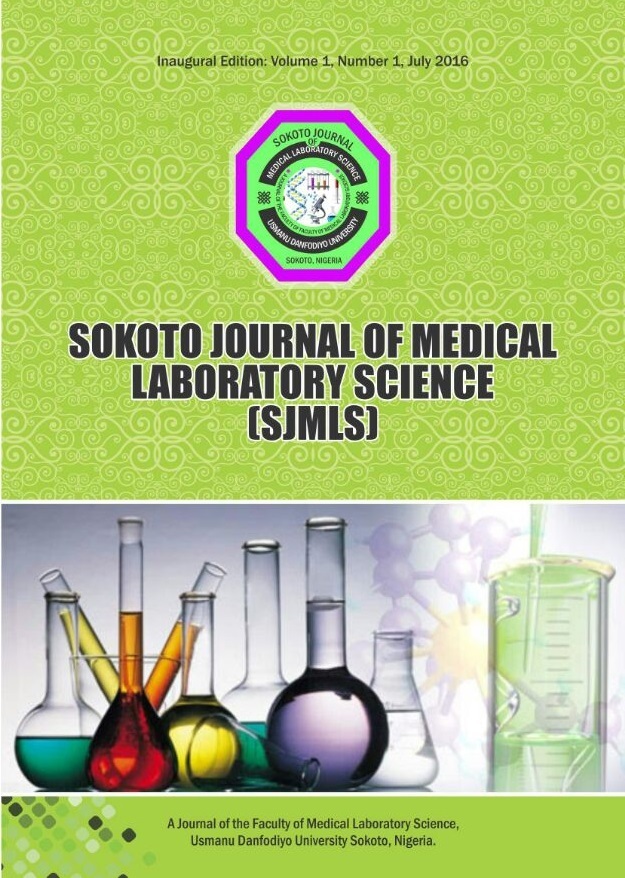Serum Homocysteine Levels and Blood Pressure in Type 2 Diabetic Patients in Zaria, Northern Nigeria.
Keywords:
Homocysteine, Blood Pressures, Type 2 Diabetes Mellitus, Cardiovascular Disease ZariaAbstract
Hyperhomocysteinaemia and hypertension are established cardiovascular risk factors for cardiovascular diseases. However, knowledge on the contributions of these risk factors in diabetic patients is limited. The purpose of this study was to assess serum homocysteine concentrations and blood pressures in Type 2 diabetic patients in Zaria, Kaduna State, Northern Nigeria. In this cross-sectional study, serum homocysteine levels and blood pressures were assessed in 140 men and women with type 2 diabetes aged 20-60 years in Ahmadu Bello University Teaching Hospital (ABUTH), Zaria, Nigeria. Diabetes mellitus status was confirmed biochemically according to World Health Organization diagnostic criteria for classification of diabetes mellitus. Hypertension was confirmed according to World Health Organization diagnostic criteria. Serum homocysteine concentration was measured using ELISA method. Data for selected clinical/demographic variables were obtained from fasting blood samples using an interviewer-administered questionnaire. The mean values of serum homocysteine, Waist circumference (WC), Hip circumference (HC), WC: HC, Systolic blood pressure (SBP) and Diastolic blood pressure (DBP) in diabetic patients were significantly higher (p=0.000) than those of controls, whereas the mean values of age, weight (WT), height (H) and Body Mass Index (BMI) in diabetic patients were similar to those of controls (p=0.972, p=0.271 and p=0.825 respectively). We observed that that High levels of homocysteine and high blood pressures all contributes to the (WT), height (H) and Body Mass Index (BMI) in diabetic patients were similar to those of controls (p=0.972, p=0.271 and p=0.825 respectively). We observed that that High levels of homocysteine and high blood pressures all contributes to the development of cardiovascular complications in people with type 2 diabetic mellitus.




